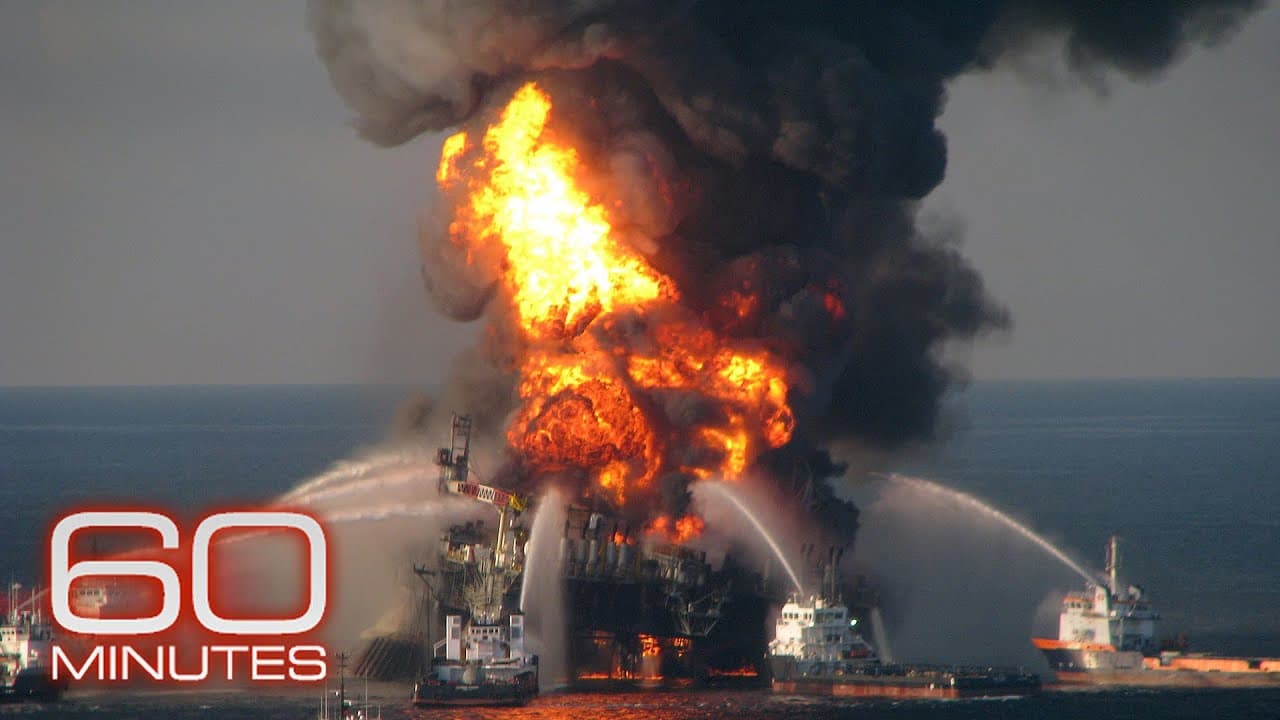Worst Oil Spills in American History | 60 Minutes Full Episodes
09 Jun 2024 (over 1 year ago)

Deepwater Horizon (Part 1) (11s)
- The Deepwater Horizon oil spill, the largest offshore oil spill in history, was caused by a series of mishaps and miscommunications.
- Mike Williams, the chief electronics technician in charge of the rig's computers and electrical systems, was a key witness in the federal investigation.
- The blowout preventer, the rig's most vital safety equipment, was damaged during a test four weeks before the explosion and was not functioning properly.
- An explosion on the rig caused extensive damage and killed 11 workers, while the oil spill that followed lasted for 87 days and released an estimated 4.9 million barrels of oil into the Gulf of Mexico.
- The oil spill caused extensive damage to the Gulf Coast ecosystem and the fishing industry, and BP, the company responsible for the disaster, was found to be negligent and was ordered to pay billions of dollars in fines and damages.
Deepwater Horizon (Part 2) (14m7s)
- Mike Williams, an electronics technician on the Deepwater Horizon, survived a 10-story drop into the sea during the oil rig explosion. His account of the events leading up to the disaster is crucial to the investigation.
- A disagreement between Transocean and BP managers on the morning of the disaster regarding the procedure for finishing the well may have contributed to the blowout.
- The Deepwater Horizon disaster was caused by multiple failures, including a faulty blowout preventer, a lack of proper inspections, and BP's decision to continue drilling despite known risks.
- BP has a history of safety violations, including a 2005 Texas refinery explosion that killed 15 workers. Another BP facility in the Gulf, called Atlantis, has been identified as a potential safety hazard.
- BP has spent $6 billion on cleanup and compensation for the Deepwater Horizon disaster, but this amount is equal to the company's profits in just the first three months of the year.
- Accusations suggest that BP, Halliburton, and Transocean contributed to the disaster by ignoring warning signs and continuing the drilling operation.
Exxon Valdez oil spill (26m12s)
- The Exxon Valdez oil spill occurred on March 24, 1989, in Prince William Sound, Alaska, when the Exxon Valdez tanker, captained by Joseph Hazelwood, ran aground, spilling 53 million gallons of crude oil.
- The spill caused extensive environmental damage, killing hundreds of thousands of seabirds, otters, and bald eagles, and severely impacting the local fishing industry in Cordova, Alaska, which dropped from a top 10 to number 60 fishing port in the United States after the spill.
- Exxon has been criticized for its handling of the spill, including its cleanup efforts, refusal to pay the $5 billion in punitive damages awarded to fishermen and others affected by the spill, and its legal tactics, which have been accused of acting in bad faith.
- Despite Exxon's claims that the spill did not cause long-term damage to marine life and that the vast majority of species have recovered, government scientists say that oil from the spill continues to contaminate beaches and harm marine life in Prince William Sound.
- Local fishermen, like Jack Hopkins, argue that the spill is responsible for the current shortage of certain fish species and the decline in the value of fishing permits, and many believe the $60,000 they received from Exxon was insufficient to cover their losses.
Taylor Energy oil spill (39m35s)
- The Taylor Energy oil spill, caused by Hurricane Ivan in 2004, is the longest-running oil spill in US history and has caused significant environmental damage and economic losses in the Gulf of Mexico.
- Timmy Kuan, a Cajun engineer, and Captain Kristi Luttrell, a Coast Guard veteran, developed a containment system called the "blue box" to address the Taylor Energy oil spill.
- Despite Taylor Energy's philanthropic reputation, the company faced criticism for the prolonged duration of the spill and its handling of the containment efforts.
- The US government's reliance on oil companies to lead recovery efforts for offshore oil spills raises concerns about potential conflicts of interest.
- Timmy Kuan's discovery of the oil spill and his subsequent collaboration with Captain Luttrell led to the development of the blue box, which successfully reduced the oil sheen on the water's surface.
- Taylor Energy filed lawsuits against Kuan and Captain Luttrell, accusing them of trespassing and negligence, while Kuvan filed a lawsuit against Taylor Energy and the federal government for accountability and damages.
- After years of legal battles, Taylor Energy dissolved and agreed to pay $475 million to the federal government for cleanup and penalties, marking a significant resolution to the case.